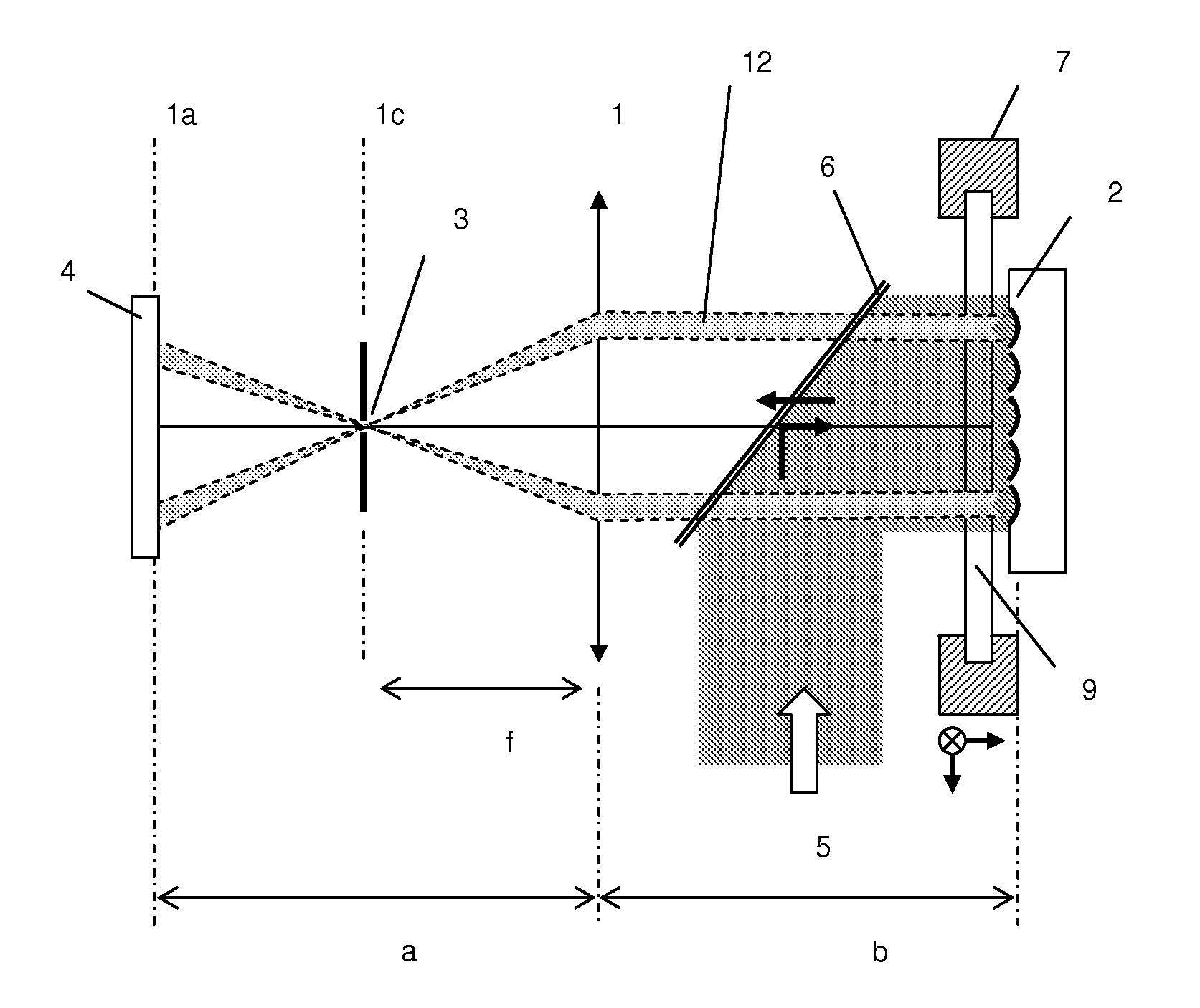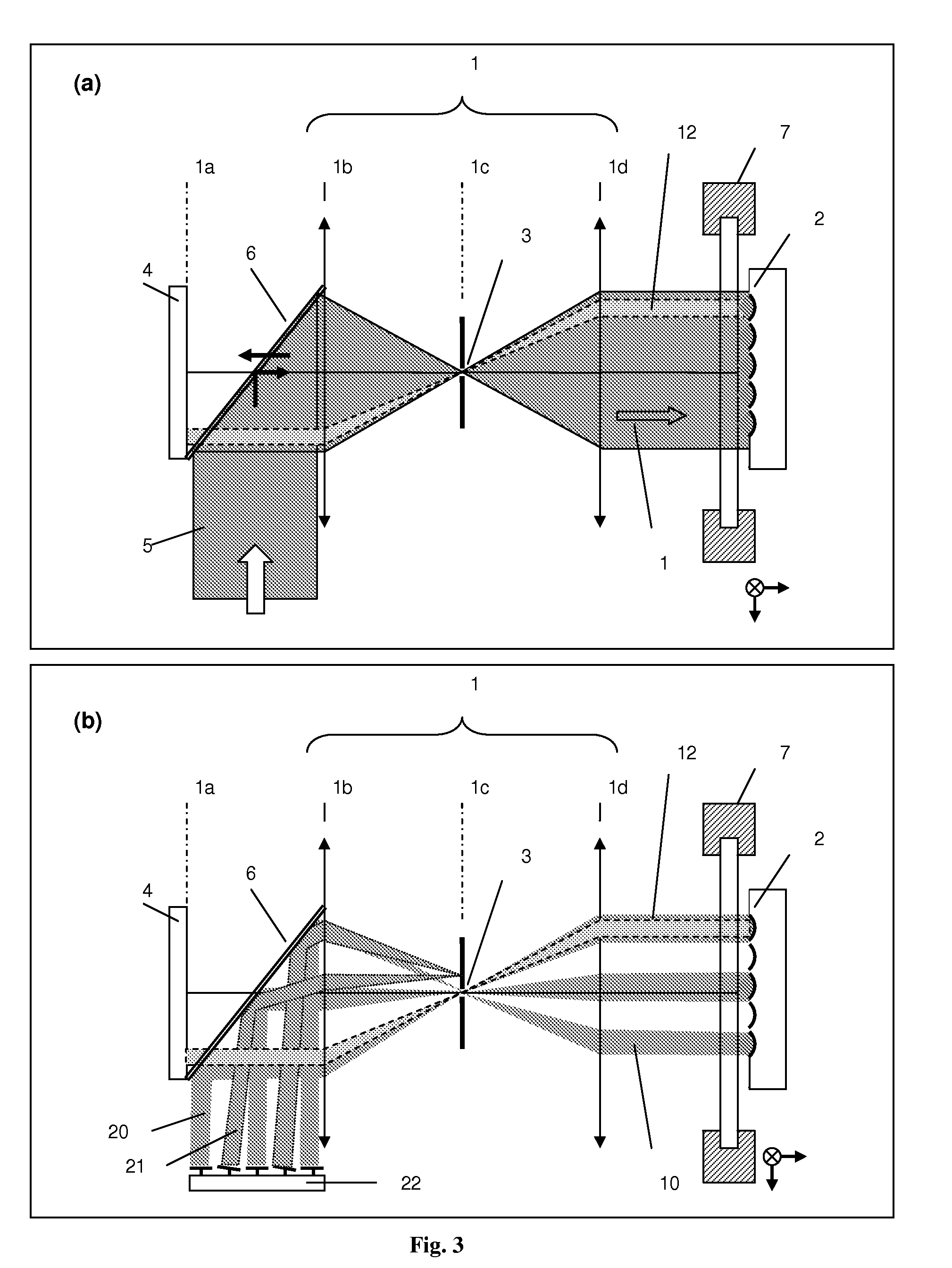High-resolution microscopy and photolithography devices using focusing micromirrors
a micromirror and high-resolution technology, applied in the field of high-resolution microscopy and microlithography, can solve the problems of preventing high-resolution polychromatic light, limiting its resolution, and intrinsically suffering from chromatic aberration
- Summary
- Abstract
- Description
- Claims
- Application Information
AI Technical Summary
Benefits of technology
Problems solved by technology
Method used
Image
Examples
first example
Micromirrors Array for Large Field Confocal Microscopy
[0044]Confocal scanning microscopy is a nowadays widely used technique, whether it is for biological or micromanufacturing applications. Since resolution is now brought down the micron, high NA is a requirement and mirrors have the potential to provide it while operating in array format. They can notably improve some of the actual systems limitations. One is the field of view limitation of most confocal microscopes that appears to use beam scanning within a high NA objective. The scan is indeed done within the field of view of the objective, rather small if providing high NA. A single focusing mirror would not overstep this limitation but the present invention proposes to use micromirrors arranged in a two dimensional array in order to perform simultaneous multi-confocal detection for large-field imaging.
[0045]Besides, the increasing development of microsystems, particularly for biological and chemical applications, encourages th...
PUM
| Property | Measurement | Unit |
|---|---|---|
| diameter | aaaaa | aaaaa |
| diameter | aaaaa | aaaaa |
| diameter | aaaaa | aaaaa |
Abstract
Description
Claims
Application Information
 Login to View More
Login to View More - R&D
- Intellectual Property
- Life Sciences
- Materials
- Tech Scout
- Unparalleled Data Quality
- Higher Quality Content
- 60% Fewer Hallucinations
Browse by: Latest US Patents, China's latest patents, Technical Efficacy Thesaurus, Application Domain, Technology Topic, Popular Technical Reports.
© 2025 PatSnap. All rights reserved.Legal|Privacy policy|Modern Slavery Act Transparency Statement|Sitemap|About US| Contact US: help@patsnap.com



